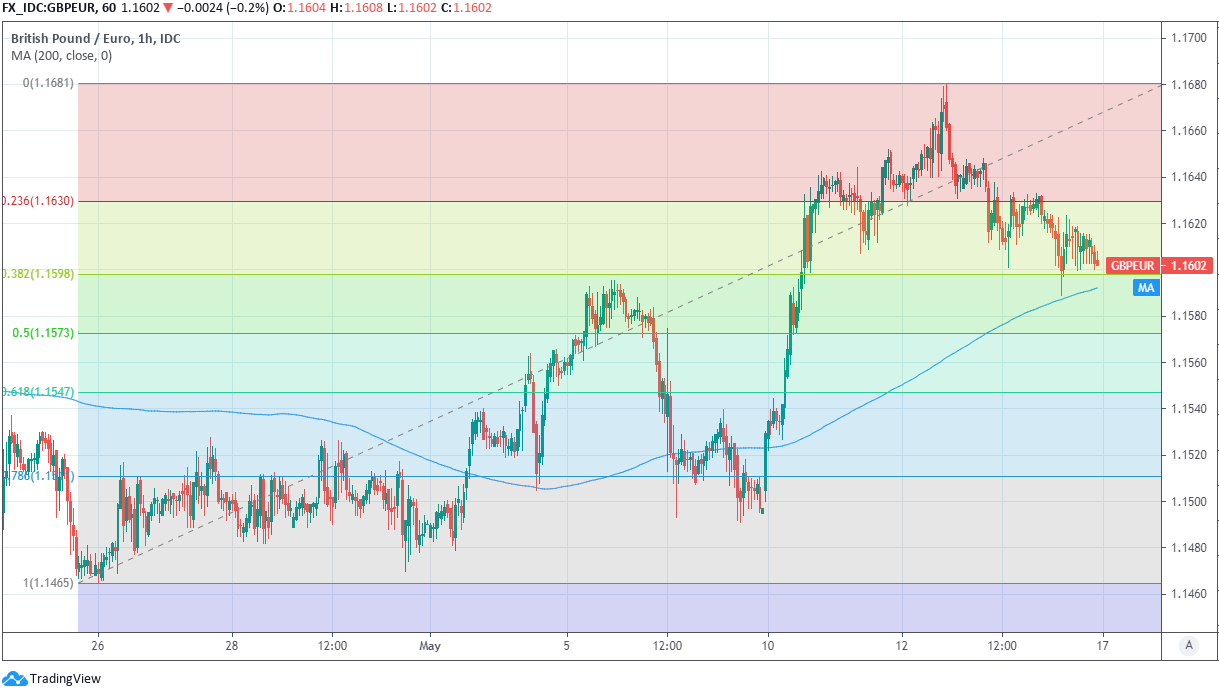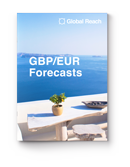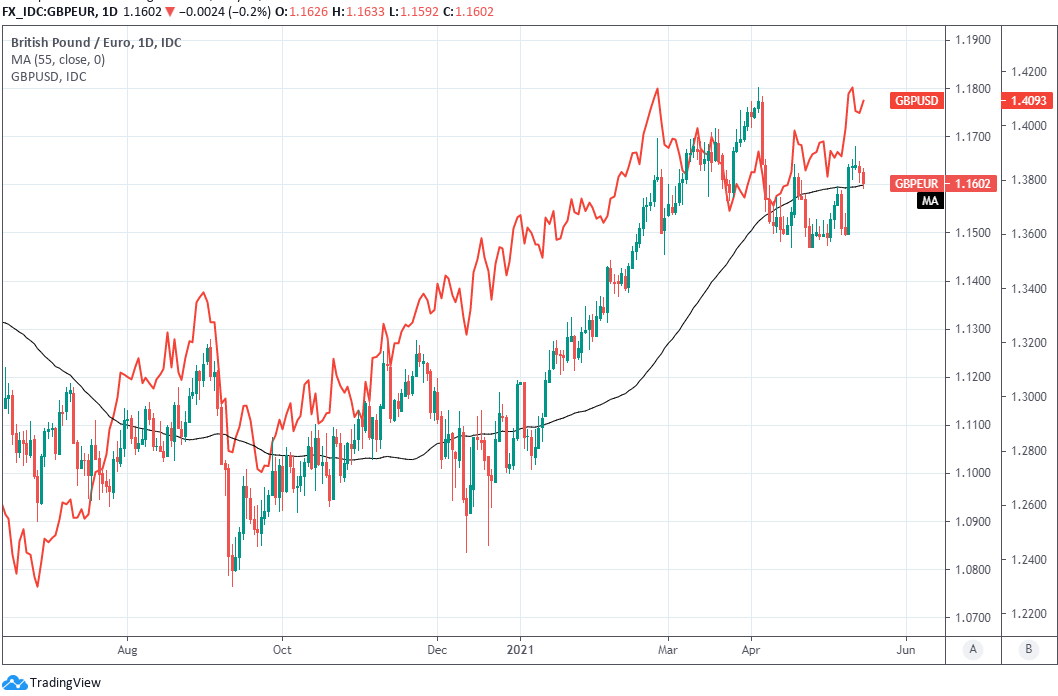Pound-Euro Exchange Rate Week Ahead Forecast: Economy Steers As Data Deluge Looms
- Written by: James Skinner, Additional Editing by Gary Howes
- GBP/EUR in cruise control with economy steering
- As data dominates with BoE speak, CPI, jobs eyed
- While new virus risks creep onto fringes of radar

Image © Adobe Images
- GBP/EUR reference rates at publication:
- Spot: 1.1607
- Bank transfers (indicative guide): 1.1300-1.1380
- Money transfer specialist rates (indicative): 1.1400-1.1520
- More information on securing specialist rates, here
- Set up an exchange rate alert, here
The Pound-to-Euro exchange rate opens the new week above 1.16 following its best week since February, but would need a series of favourable outcomes from looming economic data releases over the coming days to sustain its current buoyant level now the economy is back in Sterling's driving seat.
Pound Sterling edged lower against the Euro and non-U.S. Dollar currencies in the final session of the week but was still up 0.8% against the single currency for the period at the close on Friday having largely overlooked concerns about emergent editions of the coronavirus now gaining a toehold in the UK.
The Pound-to-Euro exchange rate benefited from an expiry of election-related political risks as well as first-quarter GDP data that showed the economy contracting less than was expected under the third ‘lockdown,’ but will be navigating a hat-trick of key figures over the coming days.
“We expect politics to slip down GBP’s agenda quite quickly, with Scotland moving onto the back-burner for at least a year and FX markets quite insensitive to political risk that does not have immediate consequences. Near-term, however, there is also some scope for positive economic news,” says Adam Cole, chief FX strategist at RBC Capital Markets.
The week begins with a series of speeches from Bank of England (BoE) policymakers who'll take to digital stages on Monday before unemployment, inflation and retail sales figures for last month are released at 07:00 on Tuesday, Wednesday and Friday respectively.
Neither of the figures stands out for significance over the other to Sterling’s overall story, although the Dollar’s reaction to April’s inflation figures last week may mean the Pound is also sensitive to surprises in either direction, while retail sales figures are set to provide insight into the pace of recovery after supposedly non-essential shops were allowed to reopen last month.
“Improving UK economic data should continue supporting GBP. The UK data points next week should be positive and help GBP,” says Petr Krpata, chief EMEA strategist for FX and interest rates at ING.
Above: GBP/EUR at hourly intervals with fibonacci retracements of May recovery and 21-hour moving-average.
Secure a retail exchange rate that is between 3-5% stronger than offered by leading banks, learn more.
The Pound-to-Euro rate almost reached 1.17 when outperforming after GDP figures did little to dislodge the economy’s path toward the strongest annual increase in GDP growth since 1941 and early stage of the second world war.
That was anticipated for it by the BoE just this month, although Boris Johnson’s sharing in a press conference of what keeps him up at night now that the coronavirus is in retreat and the economy reopening is a risk to the BoE’s outlook.
The government’s concerns over new derivations of the disease do suggest there are some circumstances in which the economic recovery, which is key to Sterling’s outperformance of the Euro, could eventually be curtailed by attempts to contain the emergent editions.
“We think sterling has further upside against the euro: with the uncertainty around Brexit largely in the past and a stronger recovery from the crisis than the euro-zone, we think that UK long-term yields and asset markets will appear more favourable,” says Jonas Goltermann at Capital Economics, who forecasts a GBP/EUR exchange rate of 1.2195 in time for year-end.
{wbamp-hide start}
GBP/EUR Forecasts Q2 2023Period: Q2 2023 Onwards |
Although no derailment is likely this week, readers could do worse than turn to BoE Governor Andrew Bailey’s monetary policy report press conference from May 06 for insight into the lay of the land beyond a five day horizon.
"It's a factor in the risks we put into the forecast, yes. That's as far as it goes at the moment," said Bailey, when responding to a reporter’s question about what kind of risks might be posed to the BoE’s forecasts by any summer wave of coronavirus infections.
"The way I read and interpret the evidence and certainly the discussions we have had, I wouldn't put too much emphasis on the summer," he added.
The Monetary Policy Committee has in the course of its last three forecast rounds stretching back to August 2020, spent one hour in each instance with England's chief medical officer Chris Whitty before agreeing the BoE's projections and policy decisions, Bailey revealed in the above referenced press conference.
"He has cautioned us that yes, of course, there is as we read regularly and hear regularly the risk of a new strain of Covid or a new version of Covid emerging," Bailey said when responding to the question asked by a reporter from Press Association.
Above: GBP/EUR at daily intervals with 55-day moving-average and GBP/USD.
The governor cited what he thought was Imperial College modelling work, which is relied upon by Whitty and the UK government, for thinking if coronavirus infections are to increase meaningfully again at all that this would be unlikely to happen before late summer or even autumn.
“I thought it had a very large confidence band on it in terms of that projection and the statistics that lay behind that projection of the summer pick-up. It had a very large confidence band on it,” Bailey said.
“I mean there is a second argument which is that there is some seasonal pattern to Covid, and if we're going to get it, it may be more likely to come in the winter than the summer. But the point is, in terms of the forecast that is one reason why we still have a reasonably large short-run downside risk on the forecast,” he added.
The governor was speaking after the BoE announced sweeping upgrades to projections for the economy in 2021 as it reopens from widespread closures of supposedly nonessential businesses as well as for the years thereafter when a return toward normal levels of activity is expected to be buttressed by statistical base effects.
This is expected to see GDP rise 7.25% in 2021 as go some way toward backfilling the -9.9% hole dug by containment efforts in 2020 however, this sets a high bar for the BoE to become more ‘hawkish’ on the outlook for interest rates which in turn leaves Sterling fate closely tied to the economic data emerging in the months ahead.







